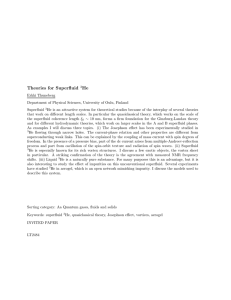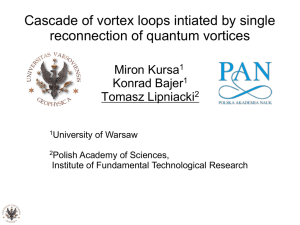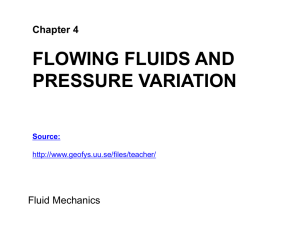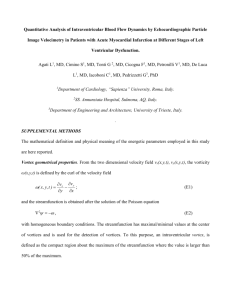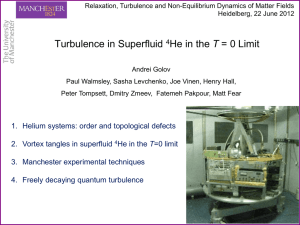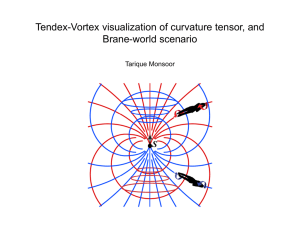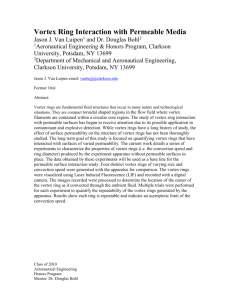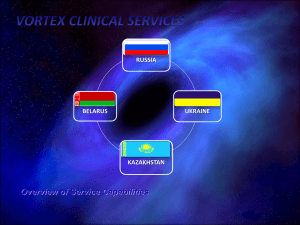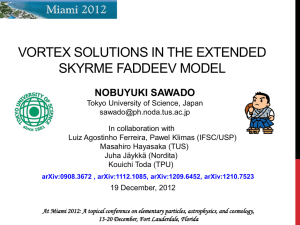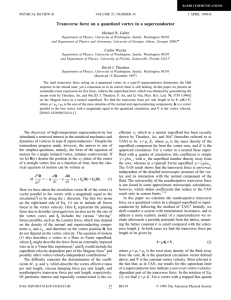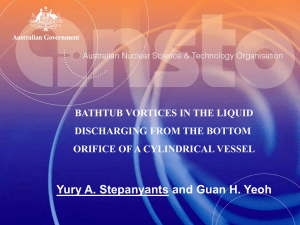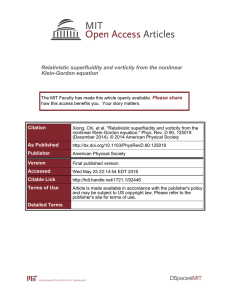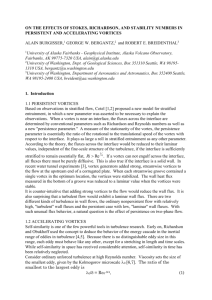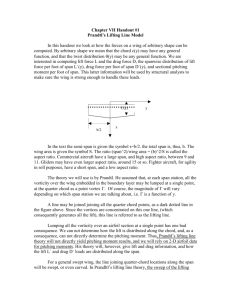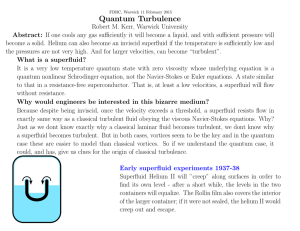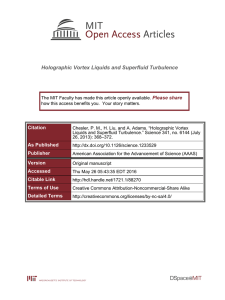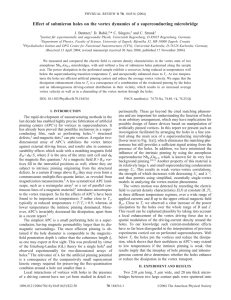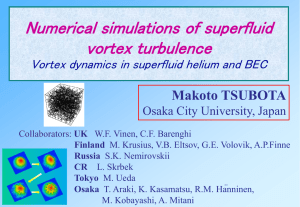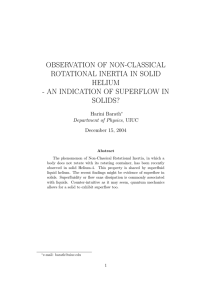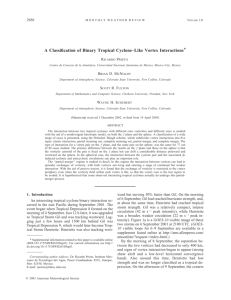aalto 11 - European Microkelvin Collaboration
advertisement
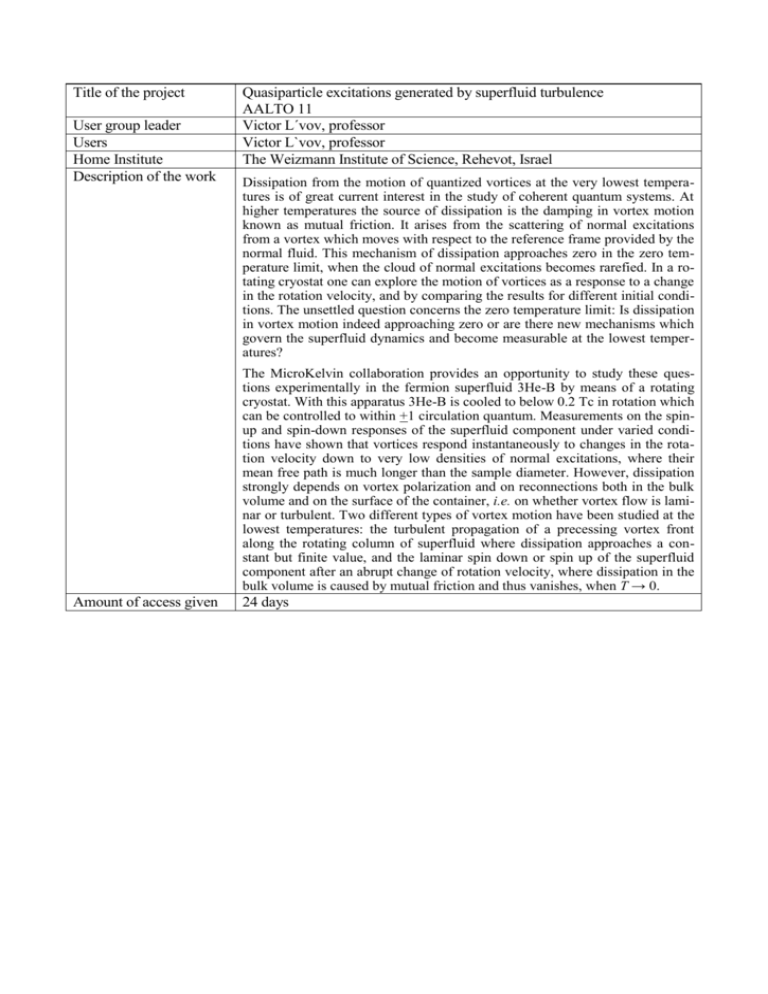
Title of the project User group leader Users Home Institute Description of the work Quasiparticle excitations generated by superfluid turbulence AALTO 11 Victor L´vov, professor Victor L`vov, professor The Weizmann Institute of Science, Rehevot, Israel Dissipation from the motion of quantized vortices at the very lowest temperatures is of great current interest in the study of coherent quantum systems. At higher temperatures the source of dissipation is the damping in vortex motion known as mutual friction. It arises from the scattering of normal excitations from a vortex which moves with respect to the reference frame provided by the normal fluid. This mechanism of dissipation approaches zero in the zero temperature limit, when the cloud of normal excitations becomes rarefied. In a rotating cryostat one can explore the motion of vortices as a response to a change in the rotation velocity, and by comparing the results for different initial conditions. The unsettled question concerns the zero temperature limit: Is dissipation in vortex motion indeed approaching zero or are there new mechanisms which govern the superfluid dynamics and become measurable at the lowest temperatures? The MicroKelvin collaboration provides an opportunity to study these questions experimentally in the fermion superfluid 3He-B by means of a rotating cryostat. With this apparatus 3He-B is cooled to below 0.2 Tc in rotation which can be controlled to within +1 circulation quantum. Measurements on the spinup and spin-down responses of the superfluid component under varied conditions have shown that vortices respond instantaneously to changes in the rotation velocity down to very low densities of normal excitations, where their mean free path is much longer than the sample diameter. However, dissipation strongly depends on vortex polarization and on reconnections both in the bulk volume and on the surface of the container, i.e. on whether vortex flow is laminar or turbulent. Two different types of vortex motion have been studied at the lowest temperatures: the turbulent propagation of a precessing vortex front along the rotating column of superfluid where dissipation approaches a constant but finite value, and the laminar spin down or spin up of the superfluid component after an abrupt change of rotation velocity, where dissipation in the bulk volume is caused by mutual friction and thus vanishes, when T → 0. Amount of access given 24 days
